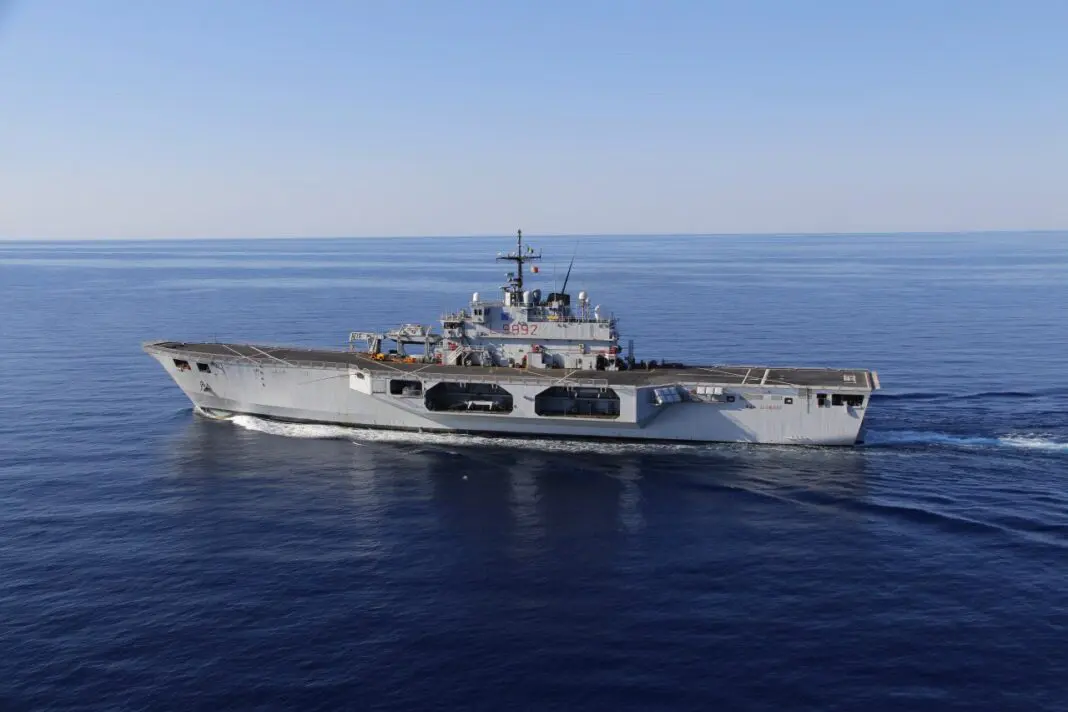Within the capabilities that the Argentine Navy seeks to recover in order to increase its operational readiness, the incorporation of amphibious ships is one of the main projects. The projection of marine infantry through a specialized unit for this purpose is a priority, as these units not only play a role in amphibious operations but also enable humanitarian assistance missions due to their transport capabilities.

Since the late 1940s, spanning nearly 50 years, the Navy has had specialized ships for landing tasks, notably including Landing Ship Tanks (LST), Landing Craft Infantry (LCI), and Landing Ship Medium (LSM) acquired from the United States after World War II.
The doctrine developed over years of operations by these units culminated in the construction of the tank landing ship ARA “Cabo San Antonio” (Q-42) at the Rio Santiago Shipyard (formerly AFNE – Astilleros y Fabricas Navales del Estado). It’s worth noting that from 1970 to 1981, the Argentine Navy also operated the dock landing ship (LSD) ARA “Cándido de Lasala” (Q-43), acquired second-hand from the United States.

During an exclusive interview with Zona Militar, Rear Admiral Carlos María Allievi, Chief of the General Staff of the Navy, mentioned the existence of a BAPIN (Request to the Public Investment Project Bank) “to incorporate two multipurpose amphibious ships that we call the amphibious duo, which are an LST, similar to the San Antonio that was in the Malvinas, goes to the coast, opens the bow door and performs the landing, and an LPD, similar to the Tonnerre that came from France. These are much larger ships, like those of Peru, Makassar class, the Paita and the Pisco. And Chile has the 313 Fincantieri (VARD), another LPD model.”
For years, the idea of the Navy has been to have two units: an LST-type amphibious landing ship along with a multipurpose LPD-type landing platform dock. Among the projects considered in recent years, the intention to locally build at least one LST-type unit with the participation of Rio Santiago Shipyard (ARS) and Tandanor gained prominence. According to previous reports, one of the evaluated options corresponds to the LST 100 design by DAMEN shipyard, while also considering the multipurpose ship design of the Makassar class, chosen by the Peruvian Navy, with two units built at the facilities of Servicios Industriales de la Marina S.A (SIMA Peru).

However, in recent months, the option of incorporating a second-hand unit has regained prominence. Similar to the approach taken to recover submarine capability through the transfer of a service unit (known as hot transfer), acquiring a second-hand amphibious ship is another option considered by the Navy, both due to cost and the time required to commission such a unit. In this regard, contacts have been established with the Italian Navy to explore the capabilities of the San Giorgio-class amphibious assault ships.
These ships have a displacement of nearly eight thousand tons at full load, serving as a true means of amphibious projection and support to the Italian Navy for the last three decades. They have a length of 133.3 meters and a beam of 20.5 meters, capable of transporting 350 infantry personnel along with 30 various types of vehicles. Although they lack a hangar for aircraft, they feature a flight deck from which various types of light and medium helicopters can operate.
Regionally, the option of acquiring amphibious ships retired by European Navies was adopted by Chile and Brazil. In 2011, the Chilean Navy incorporated the amphibious assault ship Foudre-class Sargento Aldea (LSDH-91), while Brazil acquired the second ship of the class, named “Bahia” (G40), alongside the LPH “Atlântico” (formerly HMS Ocean).
While an amphibious ship, whether second-hand or new, will restore the Navy’s capability to conduct amphibious operations with specialized means, it will also require the recovery of amphibious tracked vehicles (VAO), wheeled amphibious vehicles (VAR), and medium helicopters, which are vital elements for such maneuvers.
*Images used for illustrative purposes only.
You may also like: The Argentine Navy sends two ejection seats from their Super Étendard jets to MBA S.A. for evaluation and revision













